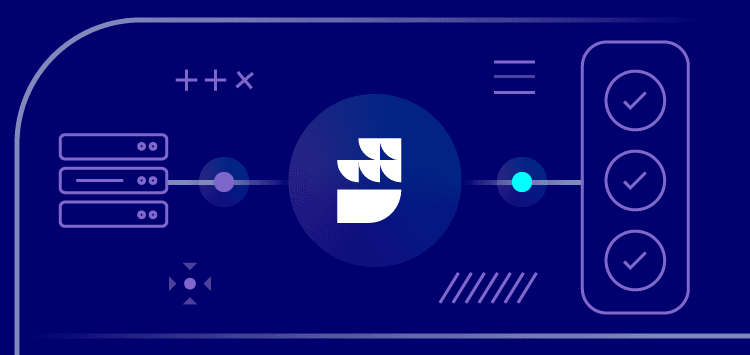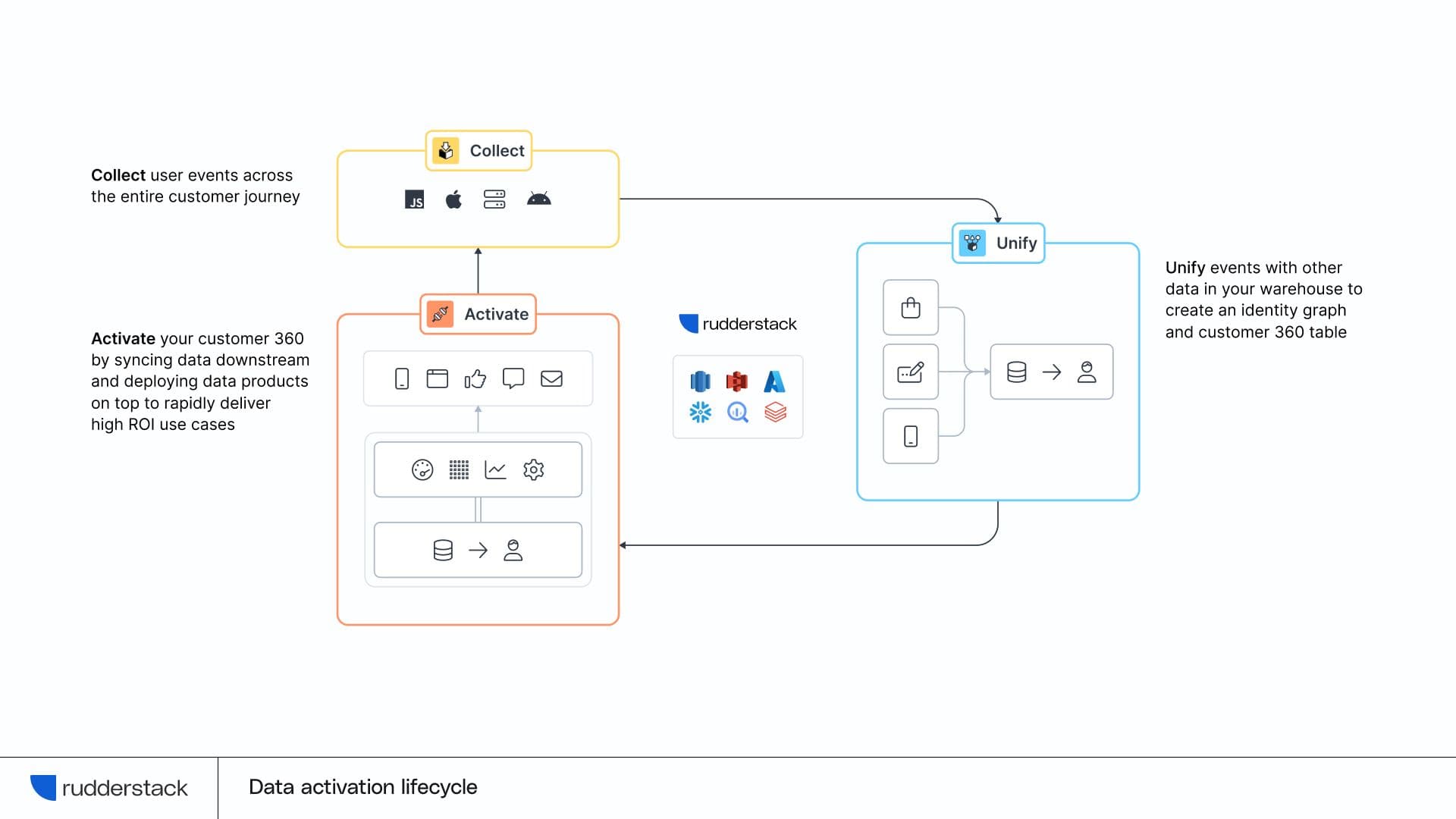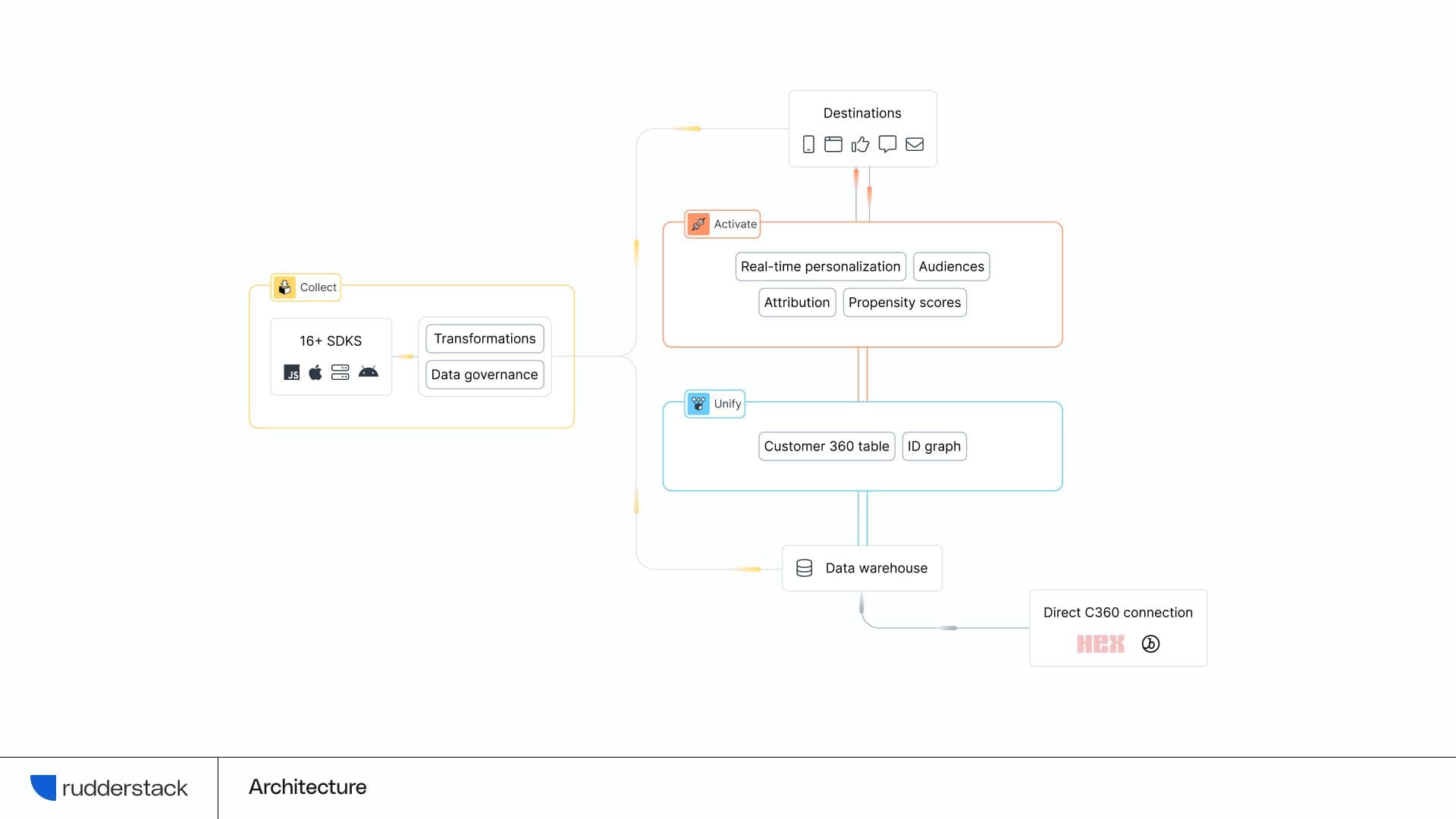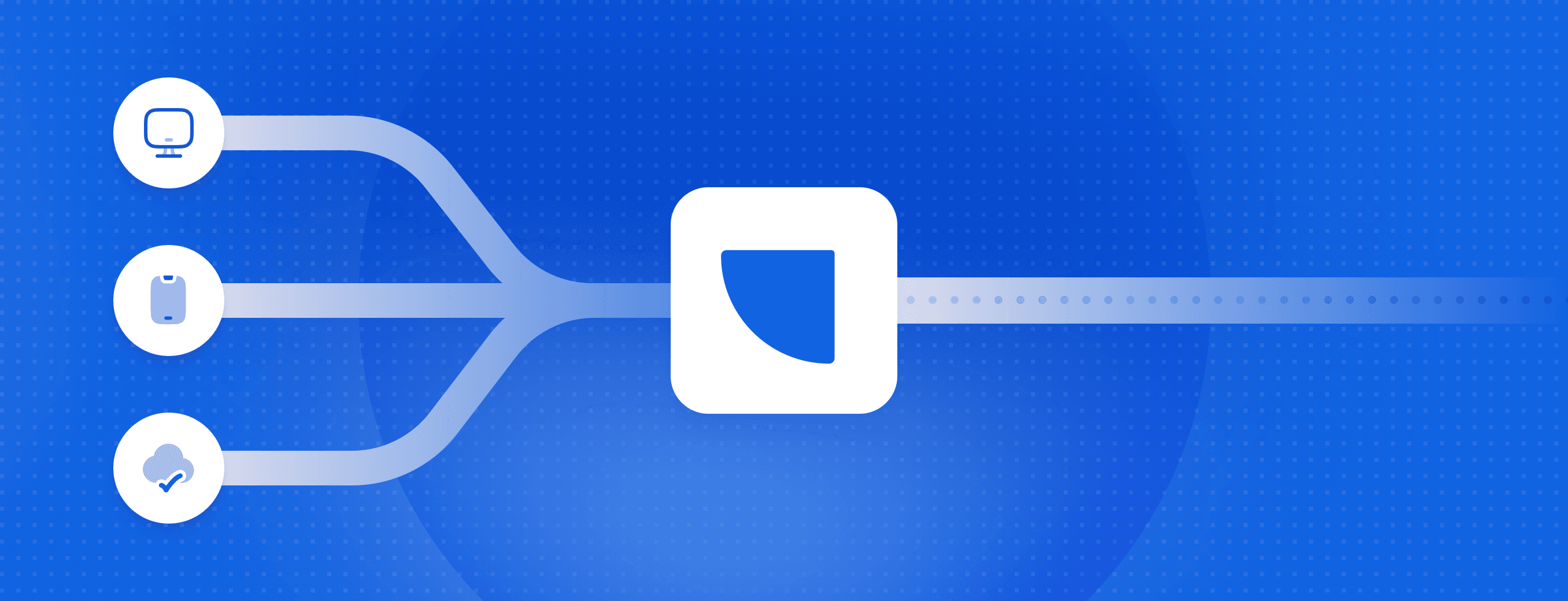The Warehouse Native Customer Data Platform

Modern data leaders frequently wrestle with this core question: What is the right architecture to help us turn customer data into competitive advantage? Now more than ever, the mandate for data teams is to ship high-impact projects fast, while maintaining cost efficiency.
But the reality of shipping projects that move the needle is complicated. While data leaders recognize that they need some system of tools to produce outcomes—a customer data platform—the predominant architectural patterns from the past and present fall short.
- Legacy marketing CDPs, which operate as closed black-boxes, were ultimately too inflexible to either collect all customer data or to create value across the stack through data integration. They excel at delivering certain customer experiences, but they ultimately create an additional, incomplete data silo.
- In-house custom builds were already a solution in large, well-resourced enterprises, but adoption widely accelerated in response to the inflexibility of legacy CDPs. Data teams needed full control and flexibility, and building in-house was a guarantee at the system level. Custom builds do offer flexibility and power, but at too high of a cost: operating them requires significant engineering resources for basic data plumbing and cleaning. This leads to projects that take months or even years to deliver.
In large enterprises, it’s common to see both patterns–marketing leverages a legacy CDP to deliver campaigns, and the data team fills the gaps with custom infrastructure.
To understand the downstream impact of these limitations and how to overcome them, we need to evaluate each architecture in the context of the data activation lifecycle.
The data activation lifecycle
Every company’s goal with customer data is to deliver experiences that drive measurable business results. From accurate analytics to advanced use cases like real-time personalization, the data products that data teams ship are ultimately what move the needle.
High-impact data activation, though, is the output of a much larger data flow and underlying infrastructure. In order to activate data, you must first collect and unify it. We call this feedback loop of collection, unification, and activation the data activation lifecycle.
- Data collection is the first critical step. You need clean, comprehensive data from every customer touchpoint to build data products and user experiences based on the entire customer journey.
- Once you’ve collected your data, you still need to unify it into complete customer profiles. This requires identity resolution, building user features (like lifetime value, days since last activity, etc.), and maintaining that complete picture in an up-to-date, accessible format for downstream teams and tools.
- The output is data activation—putting customer profiles and user features to work by delivering high-impact projects across marketing, product, customer success, analytics and data science.
At the best companies, this lifecycle feeds itself: as data is activated, the results are then collected and can inform better unification and more accurate customer profiles.

Legacy CDPs and custom builds struggle to enable data teams across the entire Data Activation Lifecycle
Legacy CDPs promise to deliver complete, actionable customer profiles, but ultimately fall short because:
- They build those profiles in closed black boxes, which reduce trust and limit flexibility
- They don’t have access to all customer data, which data teams are increasingly moving to their data warehouse or data lake to break down data silos
Custom builds promise the flexibility to collect every data point with transparency in a centralized warehouse, but they come with hidden costs, including the opportunity cost of having highly-paid engineers working on low value-add tasks such as data integration, cost overruns due to projects running behind schedule, and engineering team burnout.
Perhaps more challenging is that building basic infrastructure is the easiest part, but scaling to billions of data points per day is a whole other story, especially when it comes to data governance and quickly adapting to the changing needs of the business. Our founder faced this exact problem at a publicly traded telecom company when he led the data team. They spent so much time collecting and cleaning data that they couldn’t complete their lead scoring project.
The Warehouse Native Customer Data Platform
Current customer data platform architectures aren’t working because they only solve for one or two steps in the data activation lifecycle. Even if a data team buys or builds every piece of infrastructure themselves, data quality can suffer because the fragmented systems are difficult to monitor, troubleshoot, and scale.
The mass adoption of the data warehouse as the place to store all customer data has paved the way for a powerful, flexible, and comprehensive solution: the Warehouse Native Customer Data Platform.
The Warehouse Native CDP is a packaged platform that runs directly on the data warehouse and helps data teams deliver value at every stage of the data activation lifecycle:
- Collection pipelines ingest clean customer data
- Identity resolution and user features are unified transparently in the data warehouse
- Data is activated both from the warehouse (complete profiles) and in real time (through event streaming integrations), feeding every team and every tool with actionable data
The Warehouse Native CDP is built specifically for data and engineering teams. It provides tools that make it easy to monitor and scale the entire system while ensuring data quality and compliance throughout the entire Data Activation Lifecycle.
This architecture solves the limitations of both legacy CDPs and custom builds:
- Leveraging the data warehouse as the central, transparent source of complete customer profiles eliminates data silos and allows marketing (and every other team) to use their tool of choice. More importantly, downstream teams can use these data activation tools to their full potential because they have access to complete, enriched customer profiles.
- Because the Warehouse Native CDP is an end-to-end system, data leaders don’t have to invest time and money building infrastructure or bridging the gaps created by siloed legacy CDPs. Moreover, they still have full control over both pipelines and the modeling of customer profiles in their own warehouse.
How RudderStack’s Warehouse Native CDP supports the Data Activation Lifecycle
RudderStack’s tools make it easy for data teams to manage the entire data activation lifecycle.

Collection
RudderStack’s Event Stream makes it easy to collect data across the customer journey. Standardized schemas, a robust Data Governance Toolkit, and powerful Transformations ensure that data is consistent, clean, and trustworthy when it's delivered.
Unification
RudderStack Profiles solves identity resolution at the root so you can create value faster. With Profiles you use declarative data modeling to establish a comprehensive identity graph in your warehouse and build features on top to create a customer 360. Because it runs on your warehouse, it doesn’t limit you to RudderStack event data. You can build customer profiles with every relevant data point, and it’s declarative approach enables you to build features and respond to changing business needs with agility.
Activation
Real-time activation with Event Stream
RudderStack has 200+ out-of-the-box integrations that allow you to send clean event data to your entire stack in real-time. Our customers use real-time event data to trigger marketing automations, drive real-time analytics and ensure that every team is using the same behavioral data.
Warehouse activation with Reverse ETL
The ultimate goal of building complete customer profiles in your warehouse is to make them accessible to the teams and tools that need them. With RudderStack’s Reverse ETL pipeline, data teams can easily push complete, enriched profiles, audiences, conversions, and more to every team and tool across the company.
Data Apps for critical use cases
Syncing data to business tools is just one data activation use case. RudderStack Data Apps run on top of your customer 360 and enable you to ship other high-ROI use cases to your business in days, not months. With Data Apps, you can configure and run accurate attribution and propensity models and enable real-time personalization — from a single customer 360 pipeline — all without writing complex SQL or Python.
Ship projects that move the needle with a Warehouse Native CDP
RudderStack’s Warehouse Native CDP helps you eliminate engineering waste with automated infrastructure, keeps your data secure by running on your warehouse and makes it easier and faster for you to ship data projects that drive business value.
Get a demo of the platform today.
Published:
April 11, 2023

Event streaming: What it is, how it works, and why you should use it
Event streaming allows businesses to efficiently collect and process large amounts of data in real time. It is a technique that captures and processes data as it is generated, enabling businesses to analyze data in real time

How Masterworks built a donor intelligence engine with RudderStack
Understanding donor behavior is critical to effective nonprofit fundraising. As digital channels transform how people give, organizations face the challenge of connecting online versus offline giving.

How long does it take you to see a customer event? If it's over five seconds, you're missing out
Access to real-time customer data is no longer a luxury. This article explains how a modern, modern, real-time infrastructure can help you close the gap between customer intent and action—before it’s too late.







